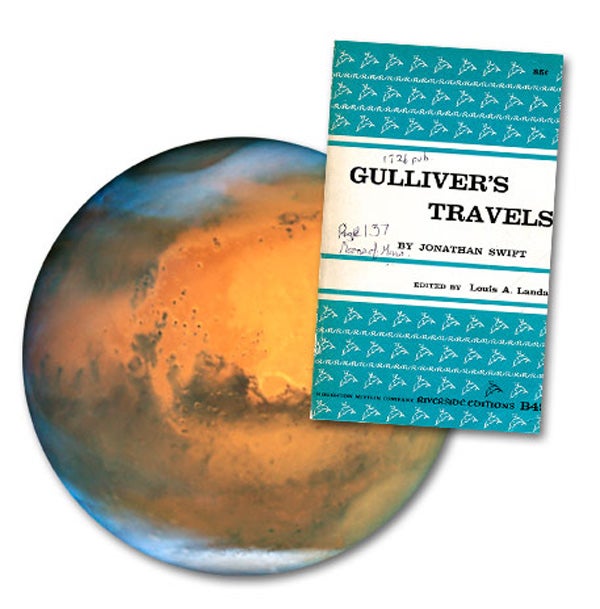
What a question we have today! Of all the planets that reflect light back to us on Earth, Mars has beckoned more than any other. When far from Earth in its orbit, as it is now, there’s not much to see, but as Mars closes in, it brightens to become one of the most brilliant objects in the sky. The last time this happened was in 2003.
One of the “classical” planets (the International Astronomical Union says there are eight — I say at least nine), Mars has a rusty red tinge that lends it a martial air; it was named for the Roman god of war because of the color. That was pretty much where knowledge of Mars rested until “modern studies” of Mars began. But when was that? In my grandfather’s generation, the prevailing view was that it started with the Greek astronomer Eugène Antoniadi’s sketches showing the planet’s canali. The correct translation is “naturally formed channels,” but Percival Lowell misinterpreted canali to mean “artificial canals.” Lowell took heart in his belief that if a multinational civilization on Mars could solve global water problems, then Earth’s inhabitants might similarly come together someday.
Antoniadi eventually abandoned this thinking around 1909 when he decided the observations were spurious while using the great refractor at Meudon Observatory (near Paris). However, Lowell’s belief in the martian canals was so strong that when NASA sent its Mariner 4 probe to Mars decades later, the spacecraft specifically flew over the area where the most obvious canal should have been. It found only craters.
While most astronomers felt disappointed, planetary scientist Gene Shoemaker was excited at this new evidence that craters, which he correctly theorized resulted from impacts, were important features in the evolution of the solar system.
However, I believe modern studies of Mars began much earlier than Antoniadi, with the 1726 publication in England of Dean Jonathan Swift’s Gulliver’s Travels. This famous novel tells of Lemuel Gulliver’s voyages to Lilliput and Brobdingnag, where he encounters races of tiny people and enormous giants, respectively. Later, Gulliver travels to the unusual island of Laputa, a city floating amidst the clouds. (The story resurfaced during the 1960s as “The Cloud Minders,” an episode of the original series of Star Trek.)
In the book, Gulliver meets, among other amazing people, a group of astronomers who “spend the greatest part of their lives in observing the celestial bodies, which they do by the assistance of glasses, far excelling ours in goodness.” The key passage comes a few sentences later: “They have likewise discovered two lesser stars, or satellites, which revolve about Mars; whereof the innermost is distant from the centre of the primary planet exactly three of his diameters, and the outermost, five; the former revolves in the space of ten hours, and the latter in twenty-one and a half.”
With this announcement, Swift predates Asaph Hall’s 1877 discovery of Phobos and Deimos by 151 years. Hall, whose longtime career at the United States Naval Observatory included two observing sessions with President Abraham Lincoln, discovered both satellites in the same week. Phobos does indeed orbit closer to its host planet than any other moon in the solar system — so close that it may collide with Mars in the distant future, or break apart to form a ring. Deimos takes about 4 times (not twice) as long as Phobos to orbit Mars. Actually, Phobos is so quick that, from the martian surface, it appears to rise in the west, move quickly across the sky, and set in the east. Even if Swift didn’t get all the details just right, it’s significant that he correctly posited that Mars’ moons were unusually small and faint. He likely suggested this because if the moons had been any bigger, by 1726 they would have already been discovered. After Gulliver’s Travels, interest in Mars continued to grow.
In the morning sky this month, Mars is just beginning its new apparition. Throughout the summer, it will continue to brighten slowly. In the future, I will show how major discoveries, from great mountaintops on the surface of our home planet, can ad-vance our knowledge of the Red Planet. In the meantime, if you haven’t read Gulliver’s Travels, I strongly recommend it. After almost 3 centuries, it’s still an exciting read, and it will give you at least one more insight into the planet we’ve been looking at and wondering about for millennia.









